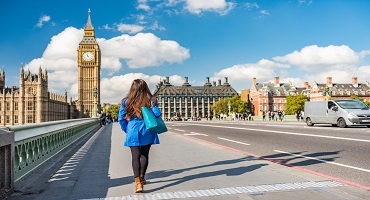By Air
There are numerous internal flights available in Spain, operated by both Spanish airlines as well as other low-cost carriers. Travelling within Spain’s different cities is made easy thanks to these. Air Europa operates from Madrid to various other cities such as Bilbao, Barcelona and Vigo while Spain’s national airline, Iberia has a wide domestic network. Other airlines like Ryanair and Vueling fly various domestic routes while Volotea flies domestic routes connecting Alicante, Seville, Valencia and various other cities but not Madrid or Barcelona.
By Bus
Buses can take you anywhere in Spain. There are bus links from villages to cities to towns although you have to remember that these are not often comfortable for tourists. Many people opt to travel by bus because it’s cheaper but you have to remember that frequent services during the week lessen during the weekend and many places might have just one bus operating on Saturdays. Some places don’t have buses on Sundays at all. You don’t need reservations; just make sure you get hold of a seat.
During holiday season, do make sure that you buy tickets in advance or you will not be able to travel by bus at all. Some cities and towns have stations where buses depart but in smaller towns, there’s often an unmarked place from where buses begin their services. It’s best to ask a local if they know where this place is or where one needs to buy tickets. There are hundreds of bus companies that operate in Spain and the most well-known among them are Alsa, Avanza and Socibus.
By Car
You can rent a car to drive around in Spain but to be able to be able to do that, you need to be over 21 years of age and have a license. Most major car rental companies also require a credit card. If you have a national license from Australia, Canada, US or New Zealand, you’ll find it easier to hire a car. If you are opting for a low-cost company, you might end up paying some extra charges, so be careful about that. A third-party insurance is a minimum requirement in Spain and while rental companies provide this, be very careful to understand the various clauses etc. Do ensure to follow traffic rules as they are enforced diligently here.
By Boat
It’s possible to travel from Spain’s mainland to Ibiza or Palma de Mallorca through ferries and hydrofoils. Some ferry companies even offer overnight services and you can even opt for sleeping accommodation in a cabin.
By Train
Spain has an excellent train system that connects most of its cities. The national train system is Renfe and it runs most of the train services in Spain. However, there are other smaller private railway lines as well. Spain has long distance trains as well as high-speed trains that link several cities and overnight trains with sleeper berths too. Long distance trains come with first and second class seating and the former is obviously more expensive than the latter. Children between the ages of four to twelve years get a discount of 40% and children younger than that can travel for free. There are various concessions on buying return tickets or if you’re a student. If you’re planning a long-distance trip on the train, it’s best to make reservations. One of the ways to save money on tickets is by buying return tickets as these tend to cost much less than one-way tickets. You can even change the return date later.
Spain has several slow moving train journeys that can be quite romantic and even luxurious. There are trains that slowly travel across Andalucía or follow a stunning narrow-gauge rail route. These trains don’t travel at night, so you can stay out at night and explore the various cities.
Local Transport
Most cities are well-equipped with buses, while Madrid and Barcelona have extensive Metro systems. Within cities, you can also opt to use taxis and some cities like Valencia have trams which run to the beach.














